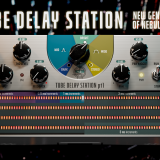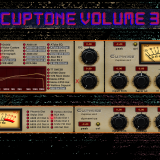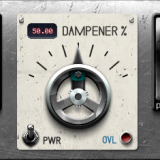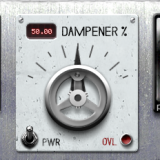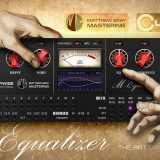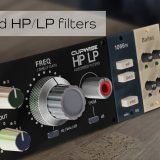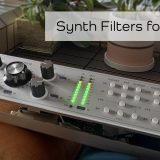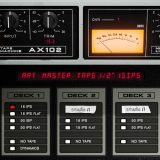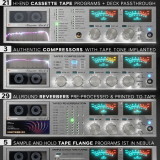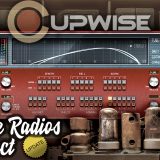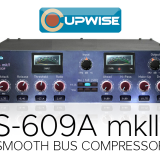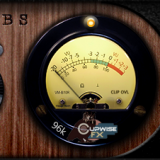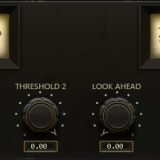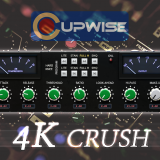Archive
I will be sending out links to the newly updated files by email soon. Here are all of the updates to Tube Radios Direct-
*added new ‘hot’ programs which allow you to get much louder distortion than ever before. i’ll stake my reputation that few if any Nebula programs out there can do anything like this level of distortion, without becoming nasty. these programs do not have the infamous ‘chirp’ that has plagued Nebula for ages, when driven too hot. of course, whether these distortions sound ‘good’ will depend on what you’re processing, as with any distortion. but they absolutely can be made to do heavy distortion and still sound great. this is the biggest and most important update. when i originally sampled these radios (about 13 years ago) i got a range of dynamics sampled, from queiter levels without much distortion, to much higher levels with lots of harmonics. those higher levels could never be reproduced until now.
*the tube compression aspect of the sound (caused by tube saturation when the radios were driven hot) was stripped out of the main tone programs. the tone programs still react dynamically- the frequency response usually slightly changes as a program is driven hotter, and the harmonics also respond dynamically. the actual compression has now been moved over to a separate batch of programs (with their own skin for selecting them!) that only do the compression- your tone is completely unaffected by them. doing it this way is better for many reasons-
1) having both the tone and compression combined in one program doesn’t allow instant reaction due to limitations with nebula. so we couldn’t have the realistic instant squishing effect a radio would do.
2) this also allows you to use the tube compression without a tone program, opening up new possible uses. on default loading they provide instant squishing like the radios would, but i added an attack and release control (modeled from one of my compressor releases), which when adjusted allow you to use these programs in any situation where you need compression. each of the many compression programs has a different knee, so they all react differently.
3) you could also do the opposite and use the tone programs for radio filtering or distortion, but without the compression. or if you do also use compression, you can adjust exactly how much you have, without it being tied to the amount of distortion you get from the tone program (as it was in the past).
*if you want the hot distortion, you probably will need to use a compressor instance before the tone instance, to reduce the dynamic range at least a little, and to catch any loud peaks. you can experiment though and do it however you like! sometimes the compressor sounds best after the tone instance, to my ears. if you’re going for distortion though it usually is best for the input to not have lots of dynamics. you’ll get a feel for exactly how much is ‘too much’ on your own.
*added a new control to the tone programs-
f1 mode – switches between 3 modes for the fundamental element of the effect-
1) the default setting = ‘1’ and gives you the normal result, which is the sampled radio tone. this is the effect on the frequency response and it does react dynamically. it’s usually various levels of filtering to the low and high frequencies, but a few programs are almost flat, while still doing ‘something’ to your sound.
2) a setting of ‘2’ bypasses the sampled fundamental and just passes your dry input to the output. this is actually a really awesome option and i’m amazed i hadn’t thought of it years ago! what makes this useful is that you turned off the radio filtering, but still get the saturation/distortion. this can be used with the normal programs for subtle harmonic enhancement, or with the hot ones for loud overdrive distortion, without the filtering!
3) setting = ‘0’ mutes the fundamental altogether, meaning all you get is the distortion! the main part of the sound has been removed! this is usually pretty weird sounding and would rarely be useful, but it’s neat so i included it as an option.
*added another new control to the tone programs-
THD mode – this switches between different modes for the harmonic distortion portion of the effect.
1) default setting of ‘1’ again gives the normal sampled harmonics, which are lower in level and provide a subtle tube enhancement of the signal.
2) settings of 2 through 5 are the four different ‘overdrive’ modes. they give you heavy distortion, and each of them usually gives a different harmonic profile, and different sounding results. these settings are only available in the ‘hot’ programs. try all of them and just pick the one you like best!
3) setting = ‘0’ this completely mutes/removes the harmonic distortion. use this if you want a clean sound. not available in the ‘hot’ programs, only normal.
*those two new controls, combined with the now separate compressor programs, allow you to use any combination of the 3 elements of the ‘radio effect’, in any ratio you want. this includes the 1) radio filtering/tone, 2) the distortion, 3) the compression. use any or all of them, however you like!
*programs were further cleaned up of aliasing and other artifacts (like the infamous low freq ripple, which wasn’t very noticeable in most of these already). in some cases (usually higher input drive) the artifacts could be audible in the previous versions, but not here. now they’re almost always super low, well beyond inaudible.
*Admiral DO3 program greatly improved. i think somehow i damaged the samples for this one when i updated it last time. i don’t know how that got past me because the frequency response was obviously wrong. now it’s how it should be- very accurate. the frequency response readout in the skin was also updated to reflect this.
*peak hold indicator has now been added. i came up with this idea and have been adding it to my most recent releases. it’s just a readout value that tells you what your loudest recent input signal was at, in dBFS. handy for making sure you don’t go over 0dB. the skin was updated to include this peak value readout.
*added an alt version of the Admiral DO4 program. the original was accidentally recorded with some delayed feedback in the signal chain, but I liked it so i kept it in the collection. this new alt version removes the delays, offering a program more like the others. the harmonics still have the delay, so the hot programs can sound very interesting.
*a lot of the programs previously inverted the input signal. now they don’t.
*some of the impulses were improperly aligned, now they’re perfectly aligned. this is kind of technical and i’m not going to go into detail, but in some cases this fix did subtly affect the sound for the better.
*feedback control has been improved. you can now usually travel all the way to 100% or close before getting runaway feedback. this allows you to dial it in more precisely, if you ever use it.
*these changes make this updated version of the release the best sounding it has ever been.
*last and definitely not least, i got Max to modify his skin and make a new one for the compressor instance. the modifications were needed to accommodate all of my updates.
